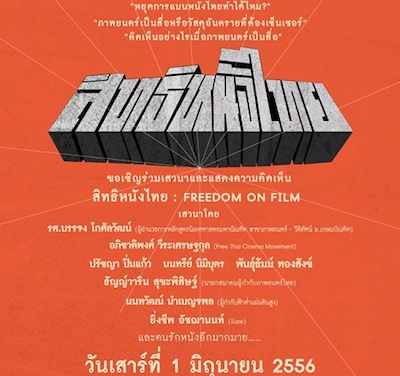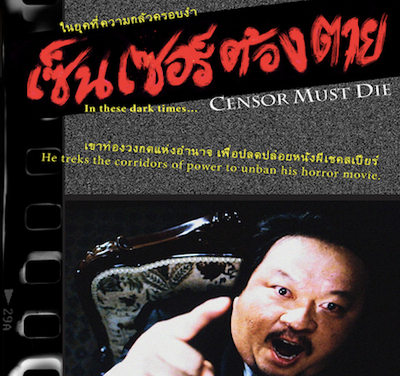
Paradoxocracy, the new film by Pen-ek Ratanaruang and Pasakorn Pramoolwong, is a documentary charting the progression (and frequent regressions) of Thai politics since the establishment of a constitutional monarchy in 1932. The film has a surprisingly conventional documentary structure: chronological narrative, voice-over narration, and talking heads (fourteen prominent Thai academics, not identified until the final credits).
The title reflects the paradoxical nature of the 1932 revolution, as noted by Thongchai Winichakul: it supposedly replaced absolute monarchy with democracy, though it also paved the way for Thailand’s military to seize power. The transition is discussed at length, as are the massacres of 1973 and 1976.
The roles of the military and the monarchy are, to say the least, highly sensitive topics in Thailand. The army is essentially a law unto itself, and acts with impunity; the monarch is shielded by the lèse-majesté law. The film begins with Pridi Banomyong’s criticism of King Rama VII, though the subsequent roles of Rama VIII and IX are not discussed in the documentary at all.
The fact that the protagonists of recent Thai political dramas are still involved in politics today means that Paradoxocracy doesn’t include any criticism of them. Prem Tinsulanonda’s premiership, for example, is noted only as a time of economic boom, though its somewhat undemocratic nature is glossed over due to his current status as head of the Privy Council. Similarly, ‘Black May’ 1992 is not dwelt upon, as Chamlong Srimuang is still politically active. This self-censorship prevents the documentary from fully exploring Thailand’s tumultuous political history.
Thaksin Shinawatra does feature, though only his relatively uncontroversial first term in office is covered. At one point, Sulak Sivaraksa says, “Your movie shouldn’t waste too much time on Thaksin”, which received a round of applause at a screening in Bangkok. Perhaps audiences have reached Thaksin fatigue?
Paradoxocracy’s release was delayed due to censorship issues, and a few quotes by Worajet Pakeerat and the typically straight-talking Sulak Sivaraksa have been muted. The English subtitles have also been blacked out during these moments, drawing attention to the censorship.
The title reflects the paradoxical nature of the 1932 revolution, as noted by Thongchai Winichakul: it supposedly replaced absolute monarchy with democracy, though it also paved the way for Thailand’s military to seize power. The transition is discussed at length, as are the massacres of 1973 and 1976.
The roles of the military and the monarchy are, to say the least, highly sensitive topics in Thailand. The army is essentially a law unto itself, and acts with impunity; the monarch is shielded by the lèse-majesté law. The film begins with Pridi Banomyong’s criticism of King Rama VII, though the subsequent roles of Rama VIII and IX are not discussed in the documentary at all.
The fact that the protagonists of recent Thai political dramas are still involved in politics today means that Paradoxocracy doesn’t include any criticism of them. Prem Tinsulanonda’s premiership, for example, is noted only as a time of economic boom, though its somewhat undemocratic nature is glossed over due to his current status as head of the Privy Council. Similarly, ‘Black May’ 1992 is not dwelt upon, as Chamlong Srimuang is still politically active. This self-censorship prevents the documentary from fully exploring Thailand’s tumultuous political history.
Thaksin Shinawatra does feature, though only his relatively uncontroversial first term in office is covered. At one point, Sulak Sivaraksa says, “Your movie shouldn’t waste too much time on Thaksin”, which received a round of applause at a screening in Bangkok. Perhaps audiences have reached Thaksin fatigue?
Paradoxocracy’s release was delayed due to censorship issues, and a few quotes by Worajet Pakeerat and the typically straight-talking Sulak Sivaraksa have been muted. The English subtitles have also been blacked out during these moments, drawing attention to the censorship.


